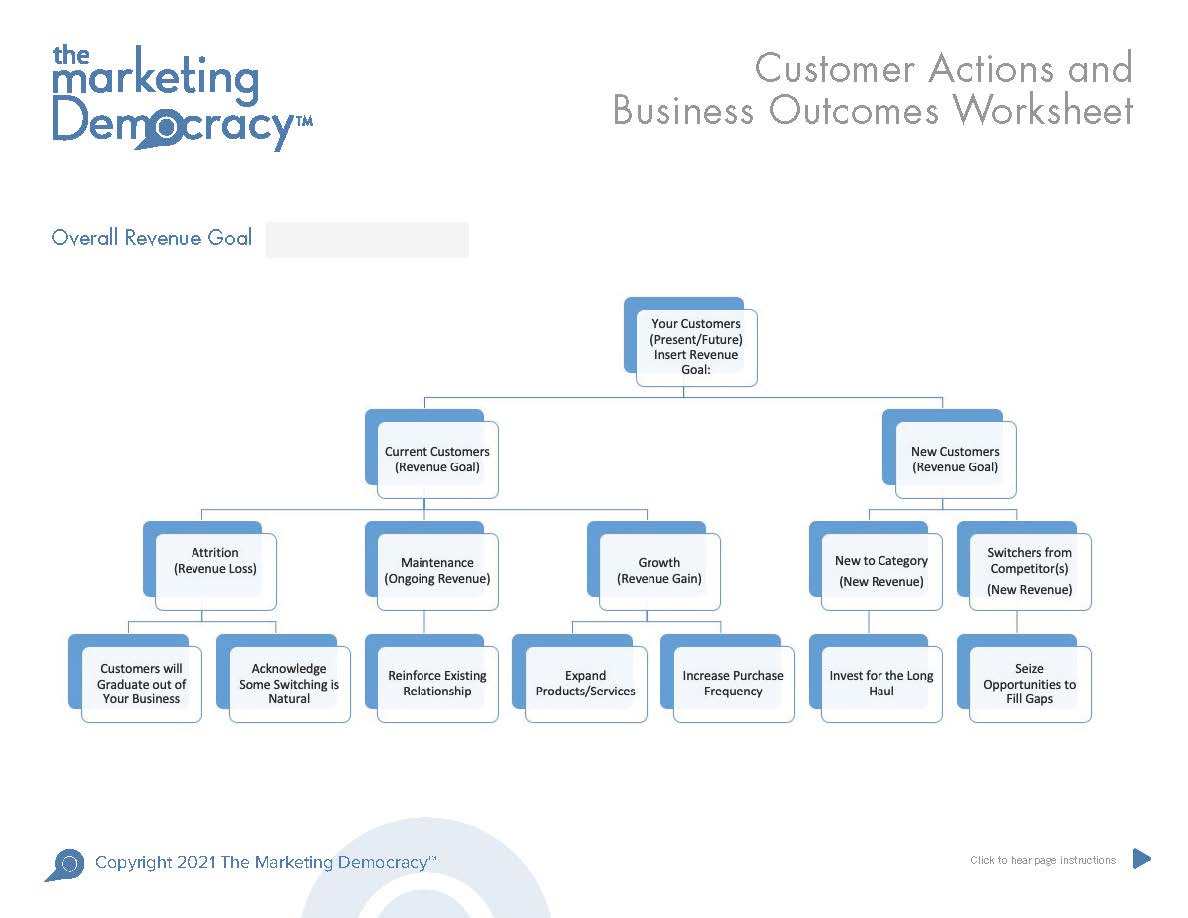Musings from The Marketing Democracy: What Will You Do With Modern Marketing Efficiency?
Operational efficiency is everywhere in today’s marketing conversation. AI tools are streamlining content production. Programmatic platforms are optimizing media buys in real time. CRM systems are automating personalized messages at scale. The promise? Do more with less. Deliver better results. Eliminate waste.
But better results for whom?
And better in what way?
Too often, the unspoken assumption is that marketing efficiency should drive one thing: cost savings. The goal becomes shrinking budgets, reducing headcount, or lowering the cost of customer acquisition. But that’s only one potential outcome.

Efficiency isn’t an end in itself. It’s a resource. And when you realize it, you have a choice in how to deploy it.
You can:
Take the savings to the bottom line.
Reinvest in doing more of the same.
Reinvest in doing something new.
Each path is valid. But none of them should be chosen reflexively. They require strategic consideration—especially from the customer’s point of view.
Efficiency Creates Breathing Room. Strategy Determines What You Do With It.
Let’s be clear: there are times when marketing teams must take the savings and deliver it to the bottom line. That’s especially true in tough economic cycles or when a business needs to redeploy resources to another area of the business.
There are also times when efficiency should be used to increase volume or consistency—doing more of what’s already working. This can be the right move when your current marketing efforts aren’t reaching their full penetration or frequency. When you consider a growth curve, there’s the steep part of the curve and then it eventually flattens out. If there’s room for growth without hitting the plateau, it makes sense to keep going.
And then, there are moments when efficiency creates the space to do something entirely new. Something that builds the brand. Connects with a new audience. Tests a new format. Or explores a new channel. These aren’t indulgences—they’re investments in future growth.
But how do you know which path is right? You won’t find the answer by staring at your own dashboards. You need to shift perspective.
Start From the Outside In
The best decisions start with your customer. Ask:
How are we showing up in their lives right now?
Are we doing enough to be helpful, relevant, and consistent?
If we do more, will that be welcomed—or will it just add to the noise?
Are there customers we’re not reaching today—either from competitors or from underdeveloped parts of the category?
What would it take to serve them well?
These are not efficiency questions. These are effectiveness questions. And they demand a customer-centered view of your marketing choices.
A Framework to Guide the Conversation
At The Marketing Democracy, we use a simple framework to help clients link customer actions to business outcomes. You can explore it here.
It starts with your existing customers. Are you making them feel like they matter? Are you reinforcing the value they’ve already placed in your brand?
That’s job one. But it’s not the only job.
Even your most loyal customers will eventually move on—whether through life stage, shifting needs, or new options. So you need to think about who comes next. What do they need? Where do they spend their time? What problems can you solve for them? And do you have the resources to show up in ways that matter?
Marketing efficiency doesn’t answer those questions. But it creates the space to ask them.
And here’s where the rest of the framework comes in.
Not All Growth Comes From the Same Place
There are two key sources of new business beyond your current customer base:
New to the Category
These are customers entering your category for the first time. Maybe they’ve hit a new life stage. Maybe they’ve encountered a problem your product solves. The question is: are you on their radar when they go looking?This audience represents long-term potential—especially if you can build a relationship early. But it requires foresight. You need to understand the triggers that bring people into your category and be present in those moments. That may require new messaging, new channels, or even new offerings. Efficiency gives you the capacity to explore those investments.
Competitive Switchers
These are customers who already buy from someone else but might be open to change. Winning them over requires a clear value proposition: what do you offer that your competitors don’t? Can you do it without leaning on unsustainable discounting or aggressive promotions?Not all switchers are worth chasing. But some are—and if there are unmet needs in the market that you can serve better, now is the time to act.
Each of these strategic opportunities—serving loyal customers better, attracting new entrants, and winning over switchers—requires thought, intention, and resources. Marketing efficiency can’t tell you what to do. But it can give you the room to do it well.
Use Efficiency as a Strategic Enabler
Efficiency is not the same as effectiveness. You can run a highly efficient operation and still be marketing the wrong message, in the wrong place, to the wrong people.
But when used deliberately, efficiency becomes a strategic enabler. It opens up the capacity to think bigger, act smarter, and reallocate resources toward growth—not just savings.
So before you default to trimming spend or repeating last year’s plan, pause and ask:
Where are we losing business—and why?
Where could we be growing—but aren’t?
What do customers need now that they didn’t need before?
And are we showing up in the ways that matter?
Because what you do with efficiency is where real strategy begins.




